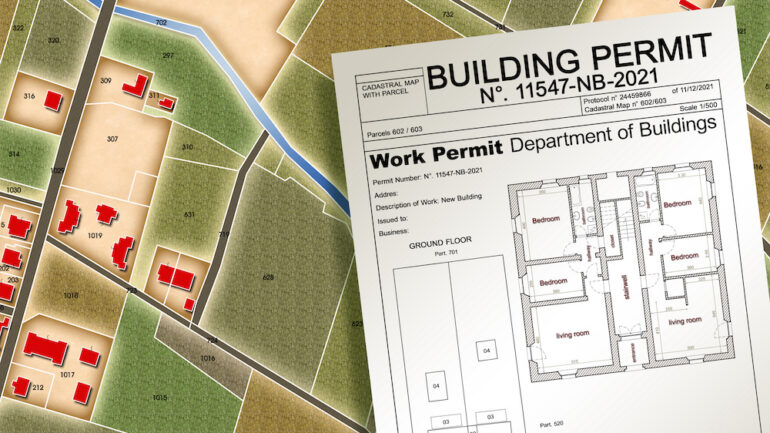When you are buying a home, it’s important to determine whether any renovations or remodeling projects were properly permitted. It’s not uncommon for homeowners to undertake such work without the required permits and government inspections. A professional home inspector will be able to evaluate this as well as the quality of the job, but you can sometimes spot telltale signs of unpermitted work on your own. If you find it, what should you do? Here’s how to deal with unpermitted renovations.
Signs of unpermitted work
- Room additions not level with the adjoining house. Sometimes ground slopes in such a way that there is no avoiding a step up or down when adding a room. But if there is little to no grade and the floor and ceiling levels don’t match up, you’re probably looking at substandard work done with no permit.
- Cracked drywall around a doorway. This suggests a door was cut from an existing wall and has substandard framing. Particularly if the wall is load-bearing, this can stress the Sheetrock and cause significant, costly damage.
- Improper placement of electrical outlets. Rooms cannot have more than 12 linear feet between electrical outlets. In wet areas such as bathrooms and kitchens, outlets must be GFCI outlets. If either of these standards are violated, the work is likely unpermitted and uninspected.
- Bedrooms with no secondary means of egress. Fire safety codes require bedrooms to have a secondary means of egress to the outside. There must be either a window of minimum acceptable size or a second door in addition to the interior bedroom door that leads outside. A bedroom without a second means of egress was probably built or remodeled without a proper permit and inspection.
- Improper bathroom window glass. Bathroom windows must have safety-grade glass, similar to safety glass on cars.
Sometimes work is done to professional standards, but the contractors do not pull permits. A professional home inspector will check with the city or county code enforcement agency to see if proper permits were pulled and work was inspected and passed.
What to do if unpermitted work has been done
If your inspector confirms work was done without permits and inspection, you should talk with your agent about your choices.
If you are applying for a mortgage, the loan underwriter will see the inspection report and flag the unpermitted work. Loan approval will be suspended until the work is inspected and approved. You can insist that the seller get the work inspected after the fact, obtain permits and get the necessary city or county approval. If the work was done well, it should pass, although there may be a fine by the code enforcement agency. If the work doesn’t pass inspection, it will have to be corrected. Should the seller be unwilling to correct the problem themselves, you can ask them for a price concession to reimburse you for doing the work yourself.
If you are purchasing for all cash, you can accept the house “as is” and deal with the unpermitted work later. However, if you don’t correct it, the permitting issue will arise again when you attempt to sell.
Related – Taking the Mystery out of Codes and Permits


